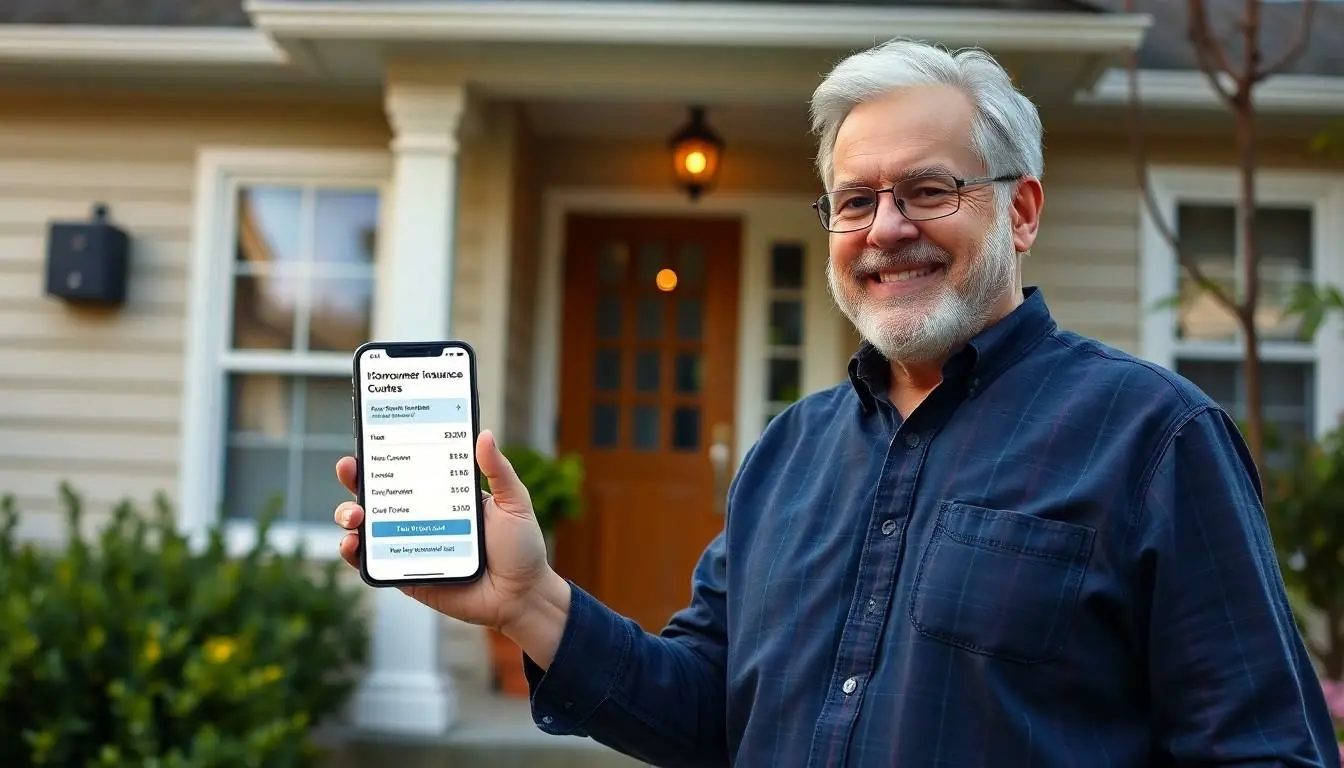Homeowners insurance can feel like that old pair of shoes—comfortable but maybe a little worn out. Just like you wouldn’t hesitate to swap out those scuffed sneakers for something snazzier, homeowners can often change their insurance whenever they want. But is it really as simple as flipping a switch?
Table of Contents
ToggleUnderstanding Homeowners Insurance
Homeowners insurance protects against losses related to property damages, personal liability, and additional living expenses. This type of coverage typically includes several elements like dwelling coverage, which insures the home’s structure, and personal property coverage, which protects belongings inside the home. Additionally, liability coverage safeguards against legal claims resulting from injuries or damages that occur on the property.
Policyholders often assess their coverage needs based on changing circumstances, such as renovations, market value fluctuations, or life events, which affect risk exposure. Understanding policy components helps homeowners identify gaps and make informed decisions regarding coverage limits and deductibles. Notably, rates can vary significantly among insurers, emphasizing the importance of comparing options.
Homeowners can change their insurance at any time, though the optimal timing often aligns with specific situations, like purchasing a new property or experiencing changes in household size. When changing policies, it’s essential to ensure there are no coverage gaps during the transition. This process involves canceling the existing policy and securing a new one, which can sometimes occur simultaneously to prevent risks.
Researching different insurance providers allows homeowners to select a policy tailored to their unique needs, whether seeking lower premiums or enhanced coverage. Asking questions, such as if the new policy covers specific risks, provides clarity. Thus, maintaining up-to-date knowledge about homeowners insurance empowers individuals to protect their property effectively, adapting to life’s circumstances.
Reasons to Change Homeowners Insurance

Homeowners often find various factors motivating them to change their homeowners insurance. These factors range from financial savings to improved coverage options.
Lower Premiums
Lowering premiums ranks as a primary reason to consider changing homeowners insurance. Competitive pricing among insurers can lead to substantial savings. Homeowners frequently discover that switching policies results in lower costs without sacrificing essential coverage. Quotes should be compared annually to identify potentially cheaper alternatives. Many insurers provide discounts for features like security systems or bundling multiple policies. Assessing these factors may reveal opportunities for significant savings.
Better Coverage Options
Shifting to a new policy can yield better coverage options tailored to specific needs. Enhanced protection for personal property or added liability coverage often becomes available through different providers. Homeowners may find policies that cover unique circumstances, such as home-based businesses or natural disasters. Regularly reviewing insurance needs ensures alignment with any life changes or property updates. Accessing new policies can also mean richer options for additional living expenses if displacement occurs due to a covered event. Evaluating coverage enhances overall security for the property and its inhabitants.
When Can You Change Homeowners Insurance?
Homeowners can change their insurance whenever they identify the need for better coverage or lower rates. It’s essential to understand specific scenarios and the timing for these changes.
Policy Renewal Period
Insurers typically send renewal notices 30 to 60 days before a policy expires. At this point, homeowners can evaluate their coverage options and make necessary adjustments. Reviewing the policy during renewal presents an opportunity to shop around and compare quotes. If a homeowner finds a better premium or enhanced coverage from a different provider, they can switch policies seamlessly before the renewal date. Keeping track of the renewal timeline ensures that any changes coincide with the policy’s end, thus avoiding lapses in coverage.
Mid-Term Changes
Homeowners can change their insurance mid-term but must consider the implications. Changes in coverage can occur due to various life events such as renovations, marriage, or the addition of new property. When requesting adjustments, insured individuals should inform their current insurer to understand any policy penalties or adjustments required. Additionally, cancellations may lead to refunds for unused coverage. Exploring various insurance providers and understanding their policies can facilitate a smoother transition when making mid-term changes.
How to Change Homeowners Insurance
Changing homeowners insurance involves a few essential steps. Homeowners need to research and compare policies to find the best fit for their coverage needs and budget.
Researching New Policies
Start by gathering quotes from multiple insurers. Homeowners should look for policies that offer comprehensive coverage for their specific needs, including dwelling and personal property protection. It’s helpful to read reviews of potential insurers to assess their customer service and claims handling. Comparing premiums is also important; a lower premium could mean significant savings. Additionally, check for any discounts available, such as bundling home and auto insurance. Evaluating the coverage limits and deductibles helps ensure adequate protection while keeping costs manageable.
Notifying Your Current Insurer
After selecting a new homeowners insurance policy, notifying the current insurer is necessary. Homeowners must inform the existing provider about the decision and provide the policy cancellation request in writing. Knowing the cancellation policy of the current insurer is important; this varies among companies. Homeowners should ensure that there is no lapse in coverage during the transition. It’s advisable to schedule the cancellation at the end of the policy term to avoid any potential penalties. Confirming the cancellation and obtaining a confirmation letter from the insurer provides peace of mind.
Potential Pitfalls of Changing Insurance
Changing homeowners insurance can present several challenges. Homeowners might face potential coverage gaps during the transition. If a new policy overlaps with the old one, it may lead to unnecessary costs.
In addition, premiums can fluctuate significantly from one insurer to another. Unexpected increases in rates can catch homeowners off guard. It’s crucial to read the fine print and understand policy details before committing.
Adjusting coverage levels might impact claims. Existing policies may have specific conditions that carry over with a new provider. Losing favorable terms from the previous insurer can happen if homeowners don’t carry comparable coverage.
Timing plays an important role. Homeowners should avoid making changes during a policy renewal period without careful consideration. Comparing policy expiration dates can prevent unnecessary complications.
Switching providers can also result in varying customer service experiences. High service standards are not guaranteed across different companies. Evaluating reviews and ratings beforehand can aid in finding a reliable insurer.
Homeowners must remember potential penalties for early cancellation. Some insurers charge fees for terminating a policy before its end date. Knowing the terms of cancellation can assist homeowners in avoiding unexpected financial burdens.
Finally, lapses in coverage can lead to increased risk. Ensuring continuous protection during the transition is essential. It’s advisable to establish the new policy before canceling the existing one to maintain uninterrupted coverage.
Changing homeowners insurance is a flexible option that homeowners can utilize whenever necessary. By regularly evaluating their coverage needs and comparing available policies, they can ensure they have the best protection for their property. Significant life events or market changes often signal the right time to make a switch.
It’s crucial to approach this process thoughtfully to avoid gaps in coverage and potential penalties. With careful research and planning, homeowners can secure better rates and enhanced coverage tailored to their unique circumstances. Staying proactive about homeowners insurance not only safeguards their investment but also provides peace of mind in an ever-changing landscape.







